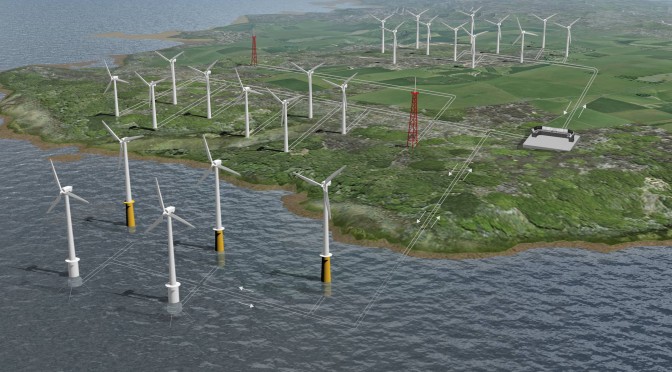A global low-carbon energy economy is not only feasible – it could actually double electricity supply by 2050, while also reducing air and water pollution, according to new research.
“Our analysis indicates that the large-scale implementation of wind, [solar] PV, and CSP [Concentrated Solar Power] has the potential to reduce pollution-related environmental impacts of electricity production, such as GHG emissions, freshwater ecotoxicity, eutrophication, and particulate-matter exposure.
“The pollution caused by higher material requirements of these technologies is small compared with the direct emissions of fossil fuel-fired power plants. Bulk material requirements appear manageable but not negligible compared with the current production rates for these materials. Copper is the only material covered in our analysis for which supply may be a concern.”
Even though photovoltaic power requires up to 40 times more copper than conventional power plants, and wind power uses up to 14 times more iron, the world wins on a switch to low-carbon energy.
These positive findings are published in the Proceedings of the National Academy of Sciences by Edgar Hertwich and Thomas Gibon, of the Norwegian University of Science and Technology Department of Energy and Process Engineering.
They tried to consider the whole-life costs of solar power, wind power, hydropower and gas and coal generators that used carbon capture and storage to reduce greenhouse gas emissions.
They took into account the demand for aluminium, copper, nickel and steel, metallurgical grade silicon, flat glass, zinc and clinker. They thought about the comparative costs of ‘clean’ and ‘dirty’ power generation.
And they considered the impact of greenhouse gases, particulate matter, toxicity in ecosystems, and the eutrophication- the overwhelming blooms of plankton – of the rivers and lakes.
They also assessed the impact of such future power plants on the use of land, and they made allowances for the economic benefits of increasing amounts of renewable power in the extraction and refinement of minerals needed to make yet more renewable power.
Then they contemplated two scenarios: one in which global electricity production rose by 134% by 2050, with fossil fuels accounting for two-thirds of the total; and one in which electricity demand in 2050 rises by 13% less because energy use becomes more efficient.
They found that to generate new sources of power, demand for iron and steel might increase by only 10%. Photovoltaic systems would require between 11 and 40 times the amount of copper that is needed for conventional generators.

